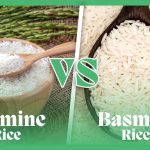Hi and welcome to your plate’s green revolution! We’re going to go deep into the world of string beans today, those colorful, crunchy treats that sometimes get overlooked on our dinner plates. But fasten your seatbelts because these humble vegetables are going to take center stage in your nutritional trip.
This post will explain the nutritional worth of string beans, solve their enigma, and explain why knowing this information may drastically improve your health. So come along on this tasty journey with us if you’re prepared to discover the secrets to a healthy you and embrace the power of these tiny marvels!

Nutritional Composition of String Beans:
Prepare to uncover the nutritious secrets of string beans and realize what remarkable little gems these are!
Protein:
String beans are a great complement to your plant-based protein sources since, despite their delicate appearance; they have a surprisingly high protein level.
Carbohydrates:
String beans are an excellent source of carbs that give you energy without making you feel guilty.
Dietary fiber:
These beans are the finest friends of your digestive system since they are crunchy and full of fiber. For a happy stomach, embrace the goodness of fiber.
Fat:
Due to their low-fat content, string beans may be indulged in guilt-free ways without compromising your nutritious goals.
| Nutrient | Amount per 100 grams |
|---|---|
| Calories | 31 kcal |
| Macronutrient | |
| Carbohydrates | 7.1 g |
| Protein | 2.4 g |
| Fat | 0.2 g |
| Dietary Fiber | 2.7 g |
| Sugars | 2.6 g |
| Micronutrient | |
| Vitamins | |
| Vitamin A | 691 IU |
| Vitamin C | 12.2 mg |
| Vitamin K | 14.4 µg |
| Vitamin B9 Folate | 33 µg |
| Minerals | |
| Potassium | 211 mg |
| Magnesium | 18 mg |
| Iron | 1 mg |
| Calcium | 37 mg |
| Phosphorus | 38 mg |
Weight Management:
Several studies have demonstrated the beneficial effects of a balanced diet high in fruits and vegetables on managing weight. As string beans are packed with fiber and relatively low in calorie consumption, like veggies and fruits, string beans also enable you to feel fuller for longer and consume fewer calories overall. (1)
Heart Health:
Consuming string beans has been associated with a decreased risk of cardiovascular illnesses. These meals can help lower cholesterol, control blood pressure, and preserve healthy blood vessels because of their strong antioxidant, and the content of vitamins, and minerals. (2)
Regulate Blood Sugar:
Studies show that eating a diet high in fruits and vegetables might be very important for controlling the amount of sugar in your blood. These meals’ high fiber content reduces the rate at which carbohydrates are absorbed, reducing the rate of blood glucose from rising and falling too quickly. (3)
Improves Digestive Health:
String beans are a great way to increase your dietary fiber intake, which also helps to maintain a healthy gut flora and avoid constipation. Additionally, fiber content helps with waste product removal and nutrition absorption. (4)
Aid in Bone Health:
Nutrients including common minerals like calcium, magnesium, and vitamin K are found in string beans which are important for strong, healthy bones. Osteoporosis and other bone-related conditions can be avoided by regularly consuming these foods. (5)
Inhibits inflammation:
There has been much research done on the anti-inflammatory qualities of various fruits and vegetables. String beans include compounds including flavonoids and polyphenols that show promise in lowering inflammation, which is connected to several chronic illnesses. (6)
The Anti-Oxidant Content:
Antioxidants are essential compounds that neutralize harmful free radicals, which can damage cells, proteins, and DNA, leading to health issues like inflammation and chronic diseases. They come in various forms like vitamins, minerals, and phytochemicals, each with unique properties.
Specific Anti-Oxidants present in String Beans:
The health advantages of string beans, often referred to as green beans or snap beans, are attributed to their abundance of various antioxidants. Among the particular antioxidants that might be found in string beans are:
Vitamin C:
As a potent water-soluble antioxidant, vitamin C is abundant in string beans. In addition to boosting collagen formation and immune system function, vitamin C helps shield cells from oxidative damage.
Beta-carotene:
String beans get their vivid green color from beta-carotene, which is a precursor to vitamin A. Beta-carotene is an antioxidant that promotes immune system function, ocular health, and general cellular protection.
Flavonoids:
Numerous flavonoids with anti-inflammatory and antioxidant qualities, including kaempferol and quercetin, are found in string beans. The preventive properties of the vegetable against chronic illnesses are facilitated by these substances.
Methods of Cooking String Beans and Association with Nutrient Retention:
When examining the culinary potential of string beans, it is necessary to investigate the many ways in which they may be cooked and how they affect the preservation of nutrients. To maximize the health advantages of this adaptable and nutrient-dense food, it is crucial to comprehend how different cooking methods affect the nutritional profile of string beans.
What is the impact of cooking on nutritional value?
The nutritional content of foods, including string beans, can be affected by cooking in both good and bad ways. Negative consequences include enzyme degradation and nutrient loss, whereas positive effects include enhanced digestibility and greater bioavailability.
Recommended methods of cooking:
When cooking string beans, use techniques like steaming, sautéing, microwaving, and blanching to retain their nutritious content. While sautéing preserves the texture and taste of the vegetable, steaming is a gentle process that helps retain nutrients. Quick and low-energy cooking, microwave heating preserves more nutrients than longer cooking times. Colour, texture, and nutritional value may all be preserved by blanching in hot water before cooking.
How to preserve nutrients during cooking?
Use less water, steer clear of overcooking, save cooking water, cook with the skin on, and cook at lower temperatures to optimize nutrient retention. People may enjoy freshly cooked string beans while maintaining their nutritious advantages by using these suggestions.
Uses in Different Diets:
String beans are a nutritious powerhouse that can be added to a variety of diets and give several health advantages. Examining their incorporation into several dietary schemes reveals their versatility and possible roles in supporting diverse nutritional ways of living.
Vegan Diets:
String beans are a mainstay for many who follow vegetarian and vegan diets since they are a great source of protein from plants. Packed with vital nutrients, beans like these are a great addition to a plant-based, well-balanced diet.
Good Option for Weight-Conscious Individuals:
String beans are an excellent option for individuals who are conscious about their weight due to the amount of fiber as well as their low-calorie level. Including these rich in nutrients beans in meals makes them tasty and helps with weight control objectives.
Mediterranean diets:
Mediterranean diets, which prioritize vegetables, lean meats, and healthy fats, easily incorporate string beans. Furthermore, these beans complement plant-based diets by providing a tasty and healthy addition to meals that emphasize entire, plant-based foods.
Allergies related to String beans:
Although most people accept string beans well, certain people may develop allergies. Reactions to allergens can include itchiness, swelling, or pain in the digestive tract.
Moderate intake for individuals with compromised health:
It may be best to consume string beans in moderation if you have certain medical concerns, such as renal problems or digestive illnesses. High concentrations of certain chemicals, such as oxalates, in string beans may affect those who are already predisposed to certain health issues.
Purchasing and Storing Tips:
For string beans to stay fresh, choosing fresh is essential. Look for a strong texture, a vivid green hue, and few flaws. Keep your beans uniformly sized and away from overripe ones so they cook evenly. For the best flavor and texture, keep string beans in the crisper drawer or refrigerator. To increase the shelf life of beans, keep them away from ethylene-producing fruits, wash them before storing them, and check them frequently to remove any spoiling.
Different Recipes Incorporating String Beans:
A flexible item that works well in a variety of dishes is string beans. They go well with soups, stews, stir-fries, salads, and snacks. A multitude of components may be combined to make salads, such as quinoa, toasted almonds, and lemon-herb dressing, or cherry tomatoes, feta cheese, and quinoa. You may make vegetarian stir-fries using tofu, cashews, and chilli-garlic sauce, or you can make them with tasty chicken and string beans. Add some string beans to minestrone or vegetable stews to make them even better. String beans may be roasted with olive oil and spices to make snacks, or they can be dipped in dips made with yogurt or hummus.
The common string bean is becoming a nutritious powerhouse, with too many amazing health advantages to list. Because of their high fiber content, low-calorie content, profusion of antioxidants, and heart-healthy benefits, these tiny marvels should be a regular fixture on your plate.
While we review the nutritional advantages, let’s not overlook the many ways you may include string beans in your everyday cooking endeavors, whether it’s in the form of crunchy salads, spicy stir-fries, hearty soups, or creative snacks. Promote their inclusion in a well-balanced diet to guarantee a vibrant array of nutrients that your body will appreciate. Enjoy the flavor of health and energy in each bite of the string beans as you embrace their brilliant green goodness, a tiny bean that packs a big punch!
References:
- https://doi.org/10.3390/nu10121833
- https://doi.org/10.1093/ije/dyw319
- https://doi.org/10.1371/journal.pmed.1003053
- https://doi.org/10.3390/nu5041417
- https://doi.org/10.1371/journal.pone.0217223
- https://doi.org/10.3390/nu12041181









